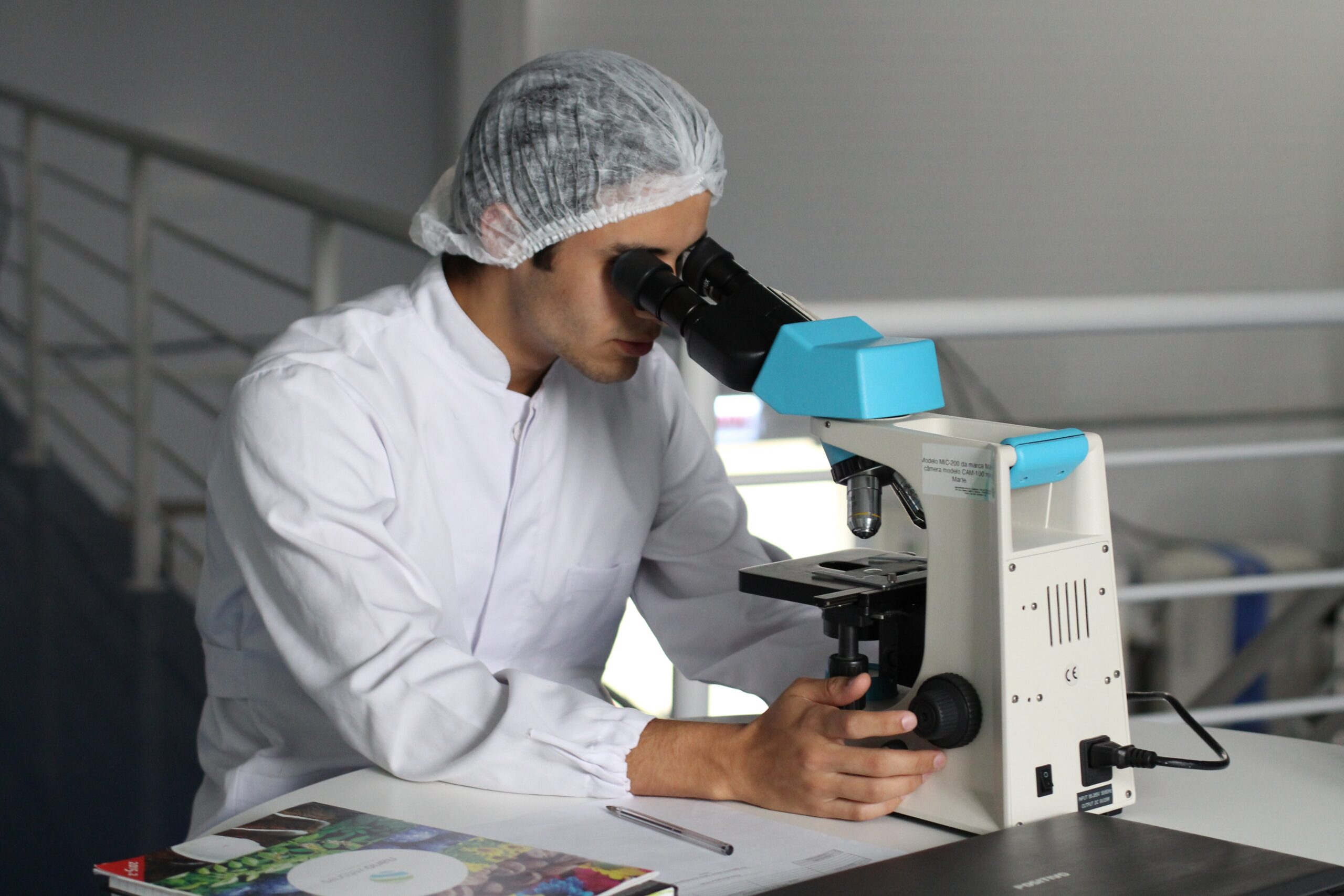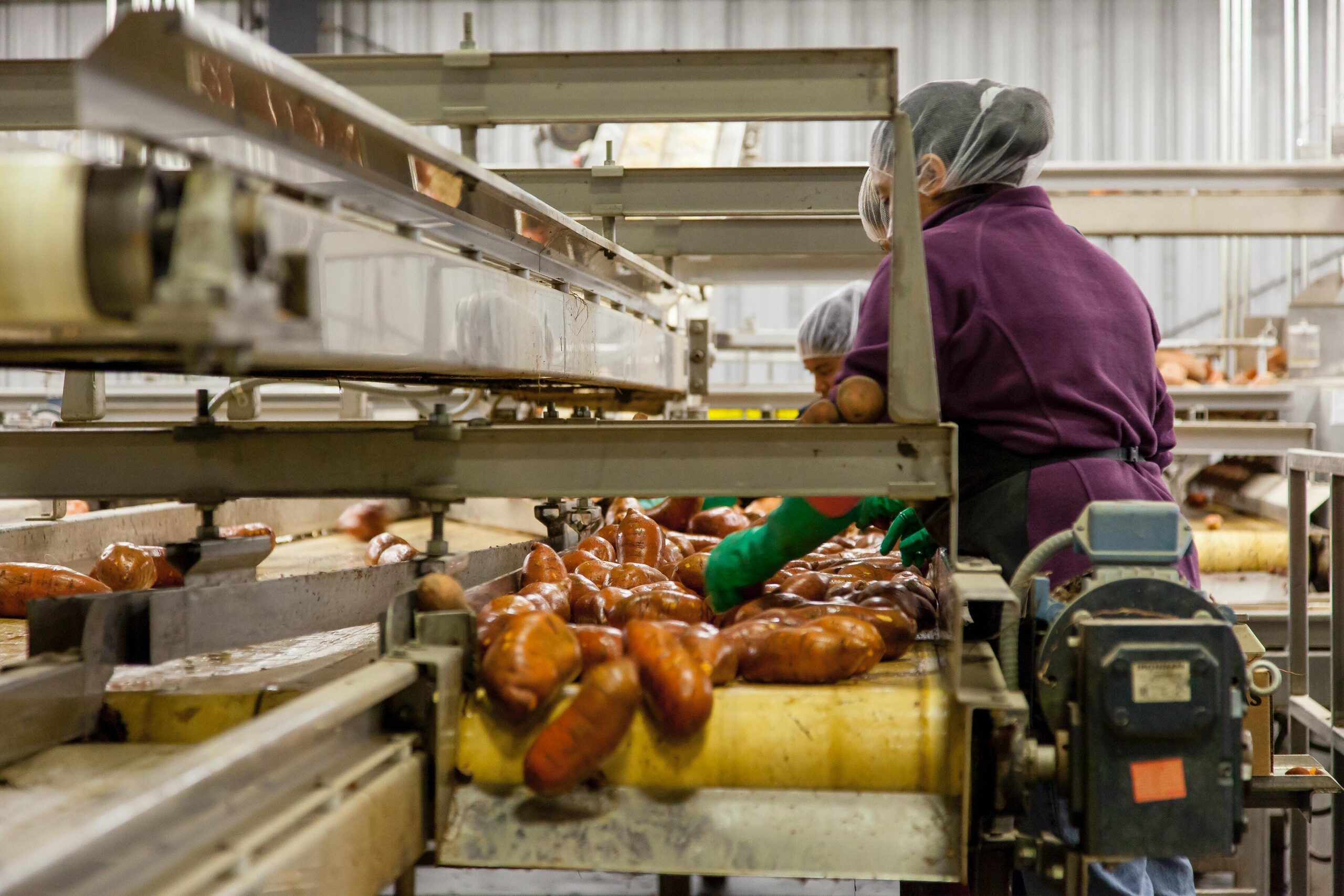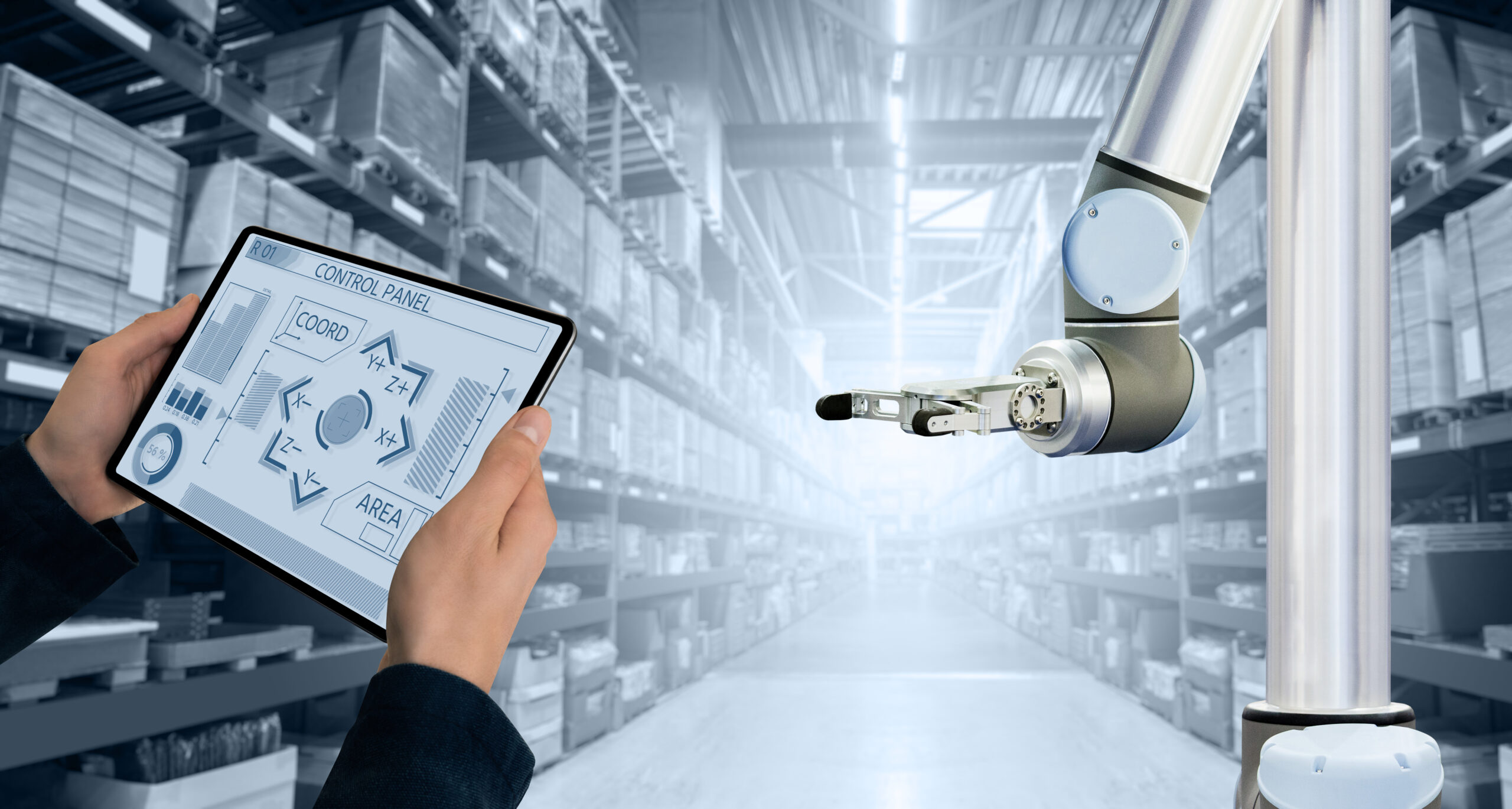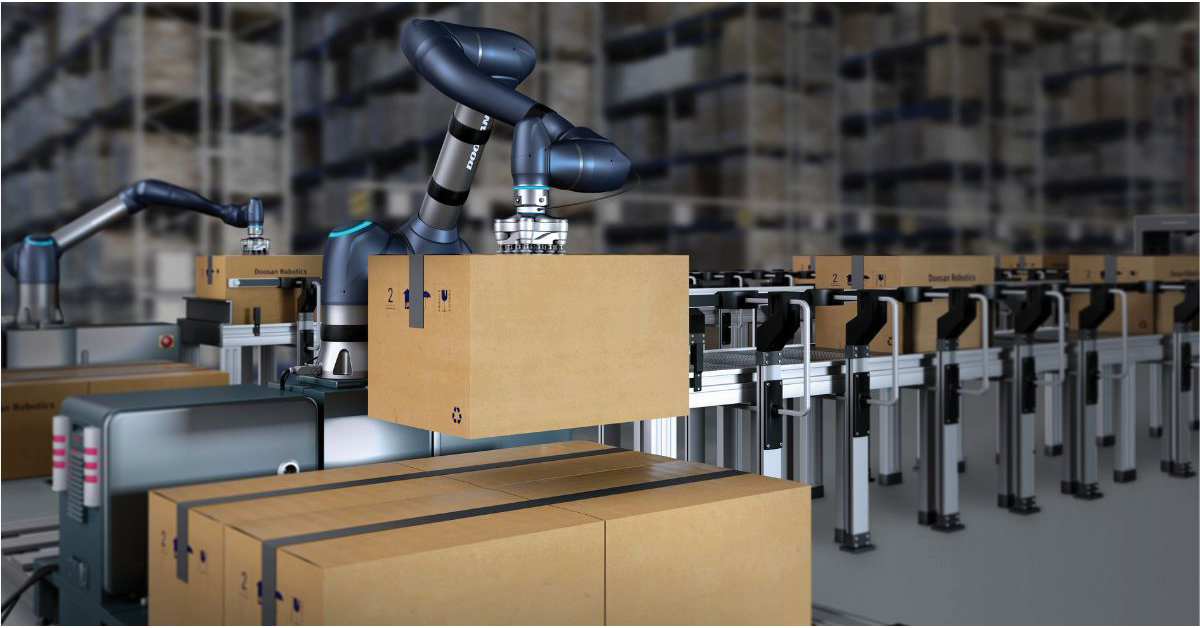
CobotX Blog
April 6, 2022
Back
How are Cobots Transforming the Food Industry
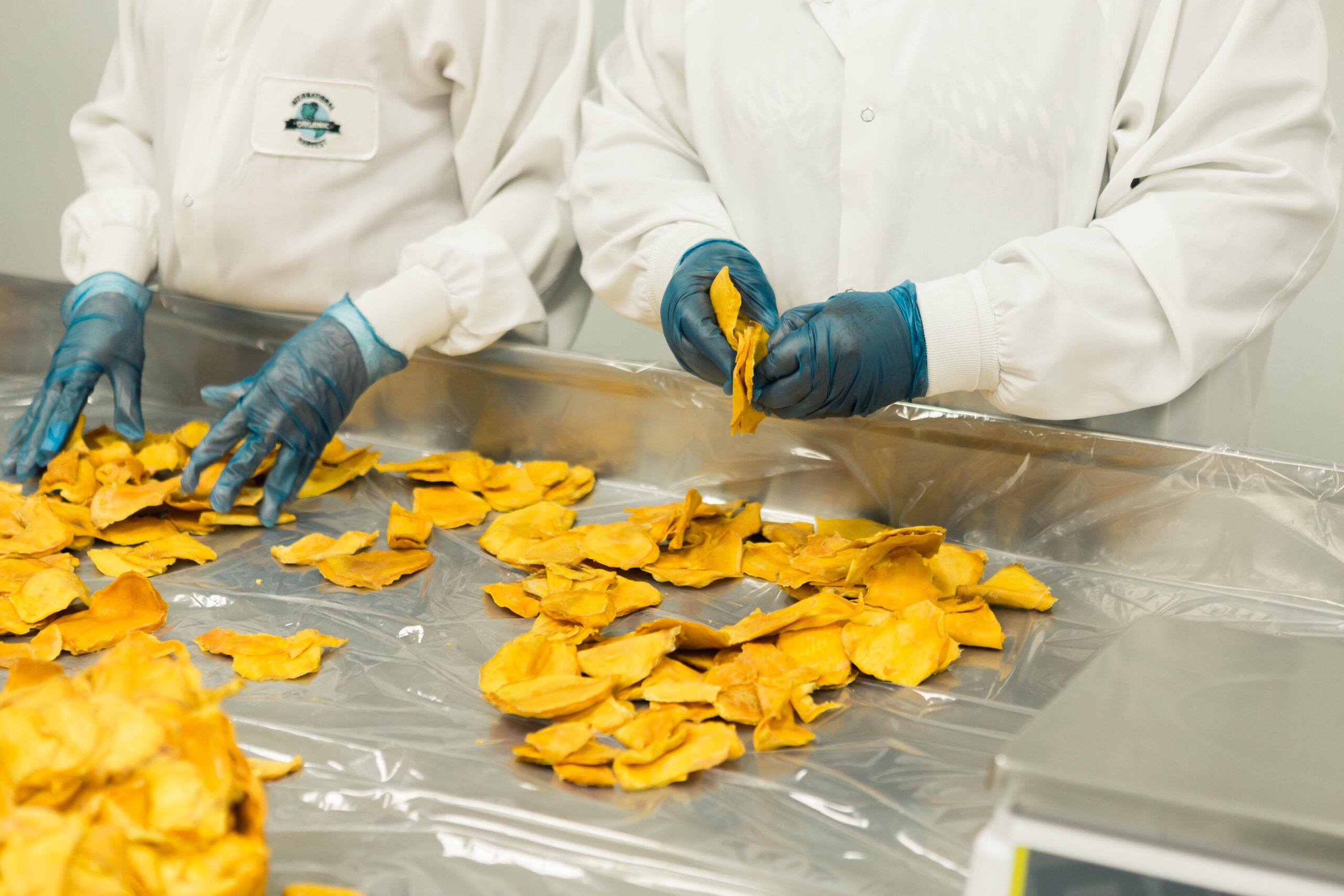
Humankind has relied on agriculture for thousands of years now. Communities would grow their own crops and raise and fish their food. But the food industry has drastically changed since then. Most women had to find a job during World War II as their husbands were absent. Because of the freedom that the workplace provided, women were reluctant to go back to the kitchen during the 50s and 60s. This is why more convenience foods and technological gadgets appeared over the next several decades. With the arrival of the fridge, companies realized that they had to make their food package aesthetically pleasing as well, and food became more colourful and decorative.
The Fourth industrial revolution saw more supply chains and significant demand for products. This is why food companies gradually started using technology to help them in this process, which is the most important reason why robotics is transforming the food industry.
Another benefit of a collaborative robot is that it is easily programmable and can work in almost all industries, including the food and beverage industries. Cobots are also interesting for these industries because of their physical benefits. While traditional robots are bulky, enclosed, and sometimes even dangerous, cobots are lightweight and do not require physical safety barriers. Thanks to their precision and agility, they can be integrated into the manufacturing lines in most settings.
One example is a case study from the Swedish manufacturer Orkla Foods. Namely, the company successfully integrated robots to help them on their vanilla ice cream packing manufacturing line. The main task of the cobots was to relieve their employees from this labour-intensive task. Before deploying cobots to perform this task, their vanilla cream was bagged and packed manually into cartons. Thanks to the pick-and-place technology of cobots, the packaging process was conducted faster and more precisely, while the human employees got the chance to strengthen other skills.
For instance, a safety monitor in a cobot robot can easily reduce its speed in motion and even stop if they sense the presence of a human worker within its working zone. Hence, cobots can't only work very close to humans, but they can handle dangerous and complex tasks. As a result, safety hazards and risks are reduced, creating a safer work environment for everyone.
The worldwide food processing is expected to quadruple in size in the next couple of years. There are two stages in which food production can be divided into:
The Fourth industrial revolution saw more supply chains and significant demand for products. This is why food companies gradually started using technology to help them in this process, which is the most important reason why robotics is transforming the food industry.
Cobots and their physical benefits
While typical robots work independently and fully take over a given task, cobots are collaborative. This means that they work alongside people, not instead of them. Their main job is to create a hybrid work environment that doesn't affect the workforce but improves efficiency and safety across all industries and through different tasks. Cobots assist people in speeding up the tasks and streamlining the operations. They also take over monotonous and tedious work, thus leaving the more exciting part of the tasks to the humans.Another benefit of a collaborative robot is that it is easily programmable and can work in almost all industries, including the food and beverage industries. Cobots are also interesting for these industries because of their physical benefits. While traditional robots are bulky, enclosed, and sometimes even dangerous, cobots are lightweight and do not require physical safety barriers. Thanks to their precision and agility, they can be integrated into the manufacturing lines in most settings.
Taking over mundane tasks
Even though we became very comfortable with lean production and new technological advances, humans are still needed to take over tasks requiring decision-making or judgment. Having this in mind, cobots can substitute people for more mundane and repetitive tasks. On top of that, cobots can also make the workplace safer as they can be deployed to take over tasks that can be dangerous for humans. By doing this, humans can be repositioned and put on higher-level responsibilities and get the chance to develop greater skill sets. This can result in better product quality.One example is a case study from the Swedish manufacturer Orkla Foods. Namely, the company successfully integrated robots to help them on their vanilla ice cream packing manufacturing line. The main task of the cobots was to relieve their employees from this labour-intensive task. Before deploying cobots to perform this task, their vanilla cream was bagged and packed manually into cartons. Thanks to the pick-and-place technology of cobots, the packaging process was conducted faster and more precisely, while the human employees got the chance to strengthen other skills.
Increased productivity and efficiency
According to research conducted by the company Kundinger in 2017, human idle time can be lowered by 85% through working with cobots and robots. One reason why this is so is because cobots are unaffected by strenuous activity and do not need to take breaks during their working hours. They can also work overtime, always with minimal supervision. The tasks that were once manually handled and were lengthy can now be accomplished very swiftly and accurately. This ultimately results in more production within the same time limit. Automating the production line increases the rate of output and reduces labour costs, thus increasing profits and ROI.Manufacturing flexibility
Because of the increasing demand for personalized products globally, having manufacturing flexibility is incredibly important for the food and beverage industry. This very often changes popular consumer trends in these two industries. Because of that increasing demand for personalization, it's becoming a challenge to timely produce all products and distribute them accordingly. This is one of the main reasons businesses opt to digitize their operations. Introducing cobots is only one way to make this a solvable problem. They can be easily programmed, reprogrammed, and redeployed to serve multiple functions. As a result, this increases the variation output, minimizes wastage of resources and lowers production costs.Safer work environment
One of the most frequently asked questions is whether robots and cobots can operate next to humans. While the cooperation between humans and robots is still being developed, cobots can operate next to humans without any issues or problems, thanks to multiple safety issues. Advancements in sensor and vision technology enabled the possibility of cobots working safely beside humans without any need of a physical barrier. One of the reasons cobots are perceived as safe is because they are equipped with sensors that detect certain obstacles and can even prevent collisions.For instance, a safety monitor in a cobot robot can easily reduce its speed in motion and even stop if they sense the presence of a human worker within its working zone. Hence, cobots can't only work very close to humans, but they can handle dangerous and complex tasks. As a result, safety hazards and risks are reduced, creating a safer work environment for everyone.
Cobots in food production
Cobots help the food and beverage industries move forward. They benefit the company by reducing production costs and increasing flexibility. They also improve the productivity and morale of the employees, which is crucial for business, making it yet another reason why implementing cobots is future-forward thinking for the food and beverage industries.The worldwide food processing is expected to quadruple in size in the next couple of years. There are two stages in which food production can be divided into:
- Primary processing, which includes operations such as cleaning, sorting, transporting and blending raw food items,
- Secondary processing, which includes cooking, roasting, freezing and other methods that are used to mix ingredients in order to create new food items.
Cobots in food packaging
Food processing machines are not new to the food industry, and they have been used for a long time in different sections of the food chain. Recent advancements definitely affected the digitization of all sectors, including the packing process. When it comes to food packaging, there are three phases that food production is divided into:- Individuals food that is packed in primary packaging (for example, pick-and-place food grippers put food in plastic containers).
- Individual products that are bundled together in secondary packaging. In this case, flexible grippers are used. For example, at the Italian Cascina Italia company, over 2.5 million eggs have to be packed every day. A cobot with pneumatically controlled grippers is responsible for stacking cartons of 10 eggs each in boxes that contain 1440 eggs. In this way, a cobot robot packs about 15000 eggs per hour.
- Secondary packages that are bundled together for transportation in tertiary packaging. An example of this is palletizing robots that stack numerous boxes onto a larger box or palette.
- It is expected that robotic packaging is expected to remain one of the most popular applications in this sector.
Cobots in food delivery
Another great example of the digitization of the food industry is the arrival of robotic meal services. Even though they are not practically cobots (although a cobot is a collaborative robot in a sense), these automated driving vehicles have recently gained popularity. There has been a significant increase in demand for dining and home-delivered, precooked meals in recent years, especially after the start of the pandemic.Cobots transforming the food industry: Conclusion
Times are constantly changing. Technological developments also affect the food and beverage industries, especially when it comes to packaging and bottling. Cobots do not only represent a helping hand; they also cut costs and shorten the time of specific processes, which is their main benefit, especially in today's world where food demand is higher than ever. If you want to know more about how a cobot can help and transform your business, give us a call, and we will do our best to help you gain more information.
Lastest Posts


